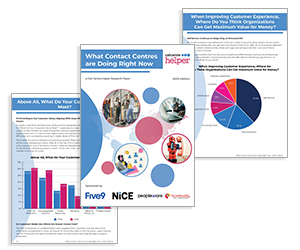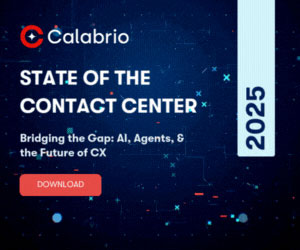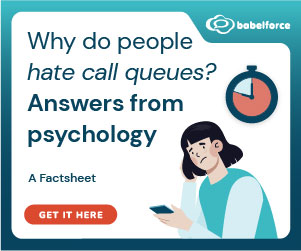Marén Römisch at Peopleware explains how resource planners can help omnichannel contact centres deliver consistent customer service across every channel.
A well-designed omnichannel strategy can significantly enhance the omnichannel customer experience, but only when the right people are properly scheduled, trained, and available at the right times.
The Power of Connected Touchpoints to Improve Omnichannel CX
Customer experience is one of the most important performance indicators for any contact centre. It’s shaped by every interaction, direct or indirect, between a customer and your company.
One of the biggest drivers of a positive experience is how well each touchpoint works together to create a smooth, consistent customer journey.
That’s why customer journey management focuses on designing cross-channel journeys, analysing, and continually improving them. Studies show that effective interaction across channels measurably improves service quality and key performance indicators (KPIs) in contact centres.
When all departments collaborate in this process, the cumulative effect of each customer interaction directly impacts key KPIs such as conversion rates, satisfaction, and loyalty.
Contact Centre Channel Switching is Standard – And Measurable
Switching between channels during a single interaction (multimodality) is second nature for today’s customers. Research shows they often switch between 4.5 and 6 channels when seeking service or making a purchase decision.
The choice and switch of channels depend on personal preference, availability, and suitability. For example:
- Before calling, customers often visit the website and may continue browsing during the call.
- They might send an email and then call two hours later if they haven’t received a reply.
- A conversation that starts in WhatsApp may be expected to continue seamlessly via chat or email.
According to a customer communications study, 80% of consumers respond negatively when required to repeat information during customer service interactions.
In today’s mobile, multimedia world, customers and prospects set the bar very high. What feels effortless for them is, in reality, highly complex for companies.
Delivering communication that appears simple and natural requires a sophisticated integration of technologies and rules working seamlessly together.
For a positive customer experience, you need:
- Synchronization across all channels
- Consistent messaging at every touchpoint
- Fast, frictionless processes
Two Critical Building Blocks to Improve Omnichannel CX
To deliver a strong omnichannel customer experience, contact centres need:
- Universal Routing – The ability to distribute all incoming interactions across all channels to the most suitable available agent based on defined criteria.
- A Unified Desktop – A single interface that gives service employees real-time, contextual access to all relevant customer data from every system and channel.
What Omnichannel Means For Workforce Planning in Contact Centres
Imagine your contact centre moves to a true omnichannel model: a customer starts a conversation via email, continues over chat, and finalizes details by phone, and the agent always knows exactly what’s been discussed throughout the journey.
Here’s what that means for scheduling:
Revising Forecast Models
When adding new channels such as chat, self-service, or instant messaging, existing forecasting models must be updated. Planners should anticipate the following:
- Phone inquiries may decrease as more customers use chat.
- Total inquiry volume may increase as new channels attract more customers, particularly within omnichannel customer experience initiatives
- Average Handling Time (AHT) for calls may increase because simpler queries shift to chat or self-service, leaving more complex queries for phone.
Routing and Staffing Considerations
Planners should consider how customer inquiries are routed across channels, including cases where customers get stuck in self-service and need to be escalated to an agent. Key points to keep in mind:
- If 20% of self-service inquiries require escalation, staffing levels must be adjusted to accommodate this demand.
- The urgency of slow self-service interactions should not be underestimated; they are at least as critical as
Multitasking in Certain Channels
For some channels, planners should also factor in that employees might handle multiple processes simultaneously. For example:
- In the chat channel, an agent may manage two or three conversations at once.
- The system should be configured to reflect this multitasking capacity.
Mapping Scenarios and Updating Plans
After considering all of the above points, the planner must map all scenarios within the system, adjust the forecast models based on these assumptions, and use the updated forecasts to create new deployment plans.
Actual Data vs. New Forecast
Using unadjusted historical call‑only data can lead to serious overstaffing or understaffing. To avoid this, after deployment, planners must track real results against forecasts and refine models.
Over weeks and months, this will enable them to collect sufficient data to produce more accurate forecasts. Ideally, AI-based forecasting should be used to continuously optimize forecasting accuracy.
The Role of Skill-Based Routing
Skill-based routing is critical in omnichannel contact centres. An ACD can handle many skill categories (channel expertise, product, language), but overly fragmented skill groups make planning brittle.
The more granular the skill groups, the more assumptions the planner must make, and the higher the chance of error.
Planners should work with robust, likely scenarios, considering for each channel:
- Service levels per channel
- Volume patterns
- Concurrent handling limits
- Escalation rates
- Agent availability and skills
They must also factor in practical constraints such as availability, shift preferences, and existing skill sets.
Rising Complexity in Omnichannel
Matching the right qualified employee to the right customer at the right moment is crucial for a smooth omnichannel customer experience.
Not every employee excels at both written and verbal communication in the contact centre, and not everyone is authorized for all issue types. For example, an excellent chat agent may not be suitable for video consultations.
How WFM Software Helps – And How it Will Evolve
Omnichannel forces planners to become more granular and responsive. Professional WFM software can help by:
- Automatically modeling many scenarios,
- Spotting bottlenecks, and
- Suggesting staffing or routing changes.
Looking ahead, WFM tools will rely more on AI. AI can:
- Detect complex patterns (for example, forecasting future channel mix – the percentage distribution of inbound volume across channels), and
- Recommend staffing that leads to optimal results.
In omnichannel planning, simple “what-if” logic is no longer enough. The number of variables that can change during a day is far higher. For example:
- The channel mix can shift unexpectedly,
- The Chat skill group might receive three sick notes,
- The forwarding/transfer rate might be 15% higher than expected, and
- Incoming chat requests might double.
Modern WFM tools can analyze short-term changes in real time and suggest immediate solutions.
Bottom line: achieving a seamless omnichannel customer experience increases planning complexity; success depends on planners and software working together efficiently.
This blog post has been re-published by kind permission of Peopleware – View the Original Article
For more information about Peopleware - visit the Peopleware Website
Call Centre Helper is not responsible for the content of these guest blog posts. The opinions expressed in this article are those of the author, and do not necessarily reflect those of Call Centre Helper.
Author: Peopleware
Reviewed by: Rachael Trickey
Published On: 12th Sep 2025
Read more about - Guest Blogs, Peopleware




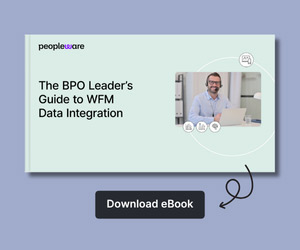

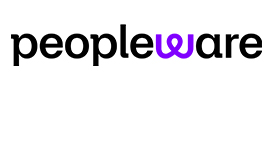 Peopleware is a leading workforce management (WFM) solution, trusted by over 500,000 users in 30+ countries. With smart forecasting, automated scheduling and real-time management, organizations can optimize workforce efficiency and keep work aligned with demand. From precise time tracking to flexible planning, Peopleware helps organizations boost operational efficiency and foster a more engaged, productive workforce.
Peopleware is a leading workforce management (WFM) solution, trusted by over 500,000 users in 30+ countries. With smart forecasting, automated scheduling and real-time management, organizations can optimize workforce efficiency and keep work aligned with demand. From precise time tracking to flexible planning, Peopleware helps organizations boost operational efficiency and foster a more engaged, productive workforce. 




